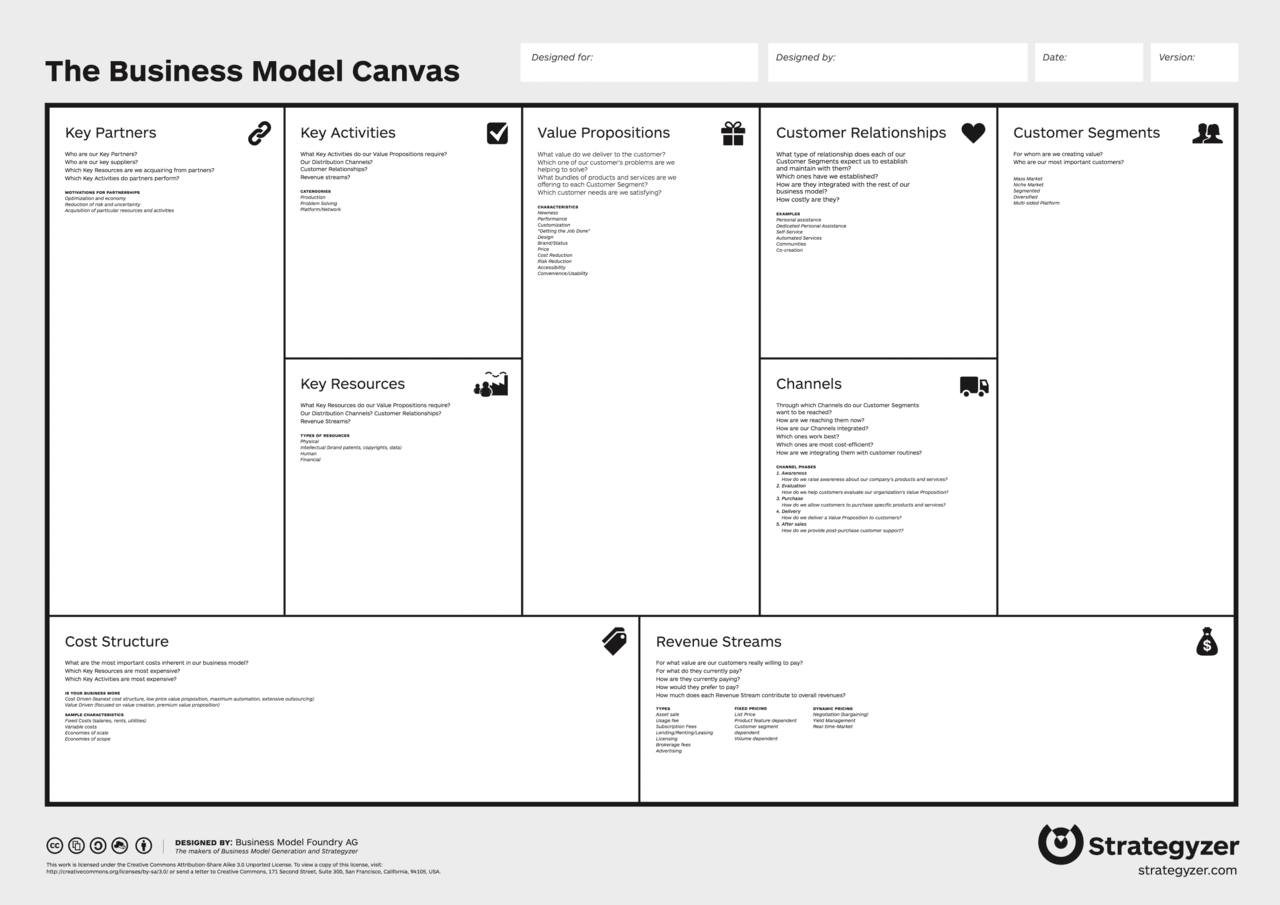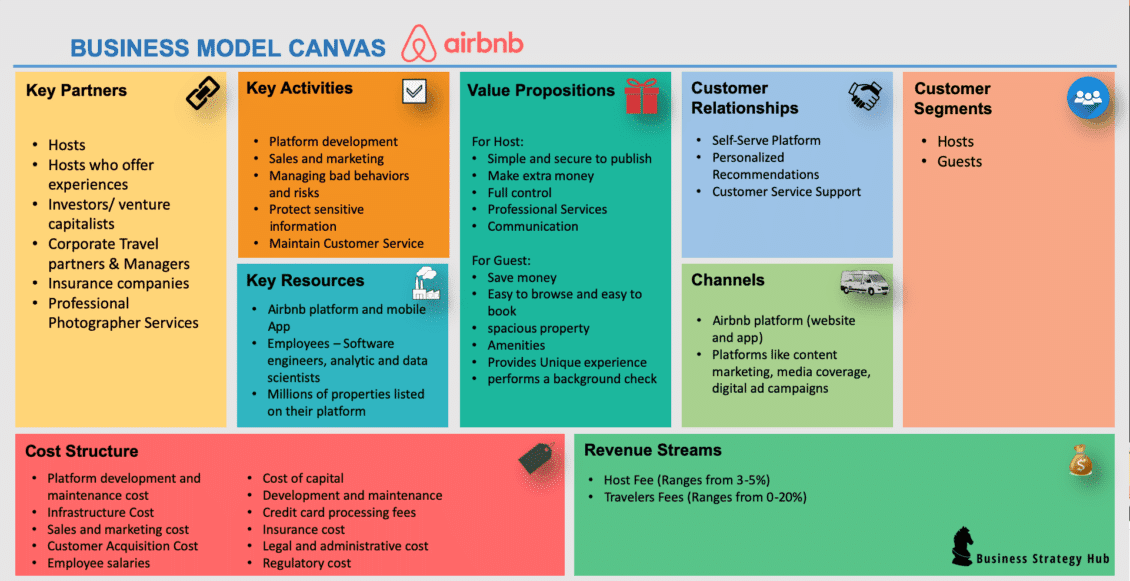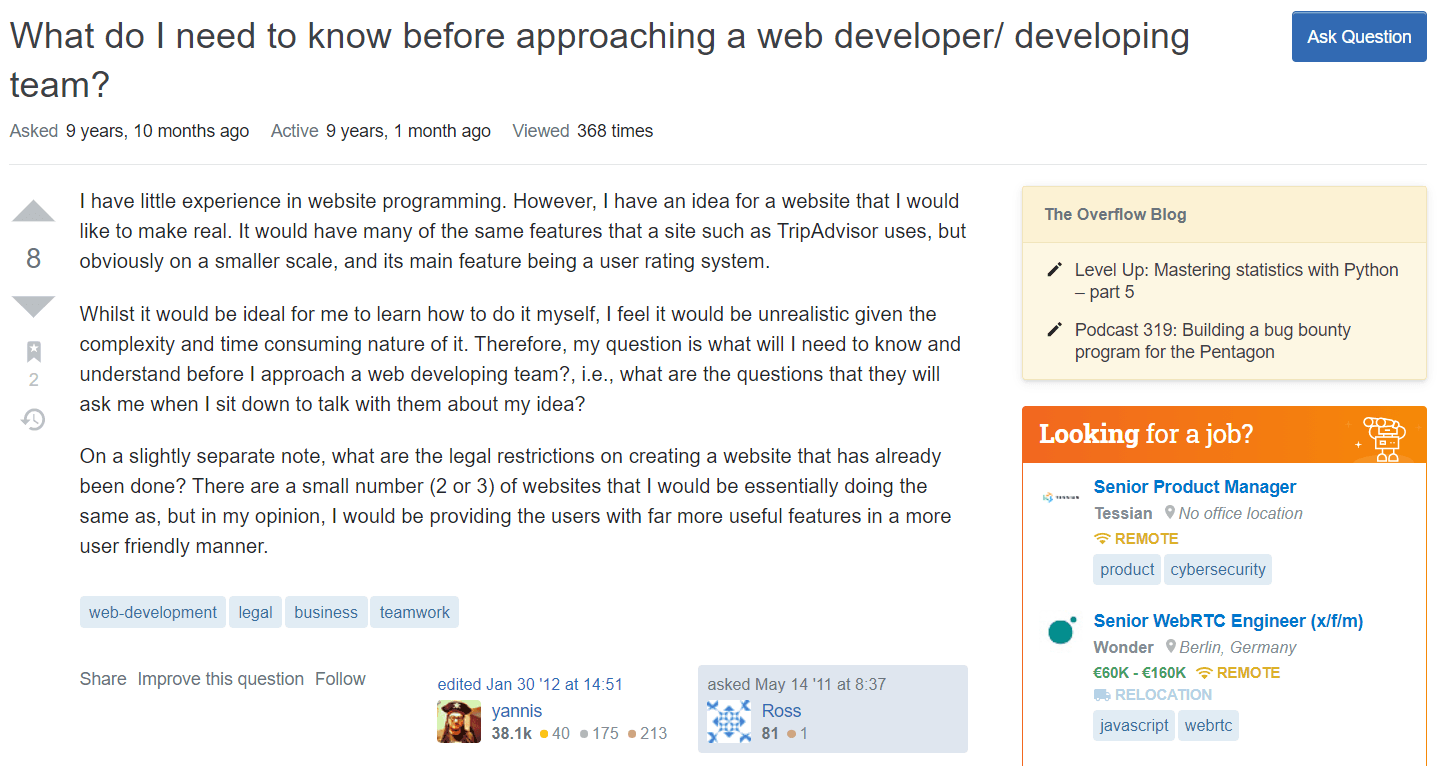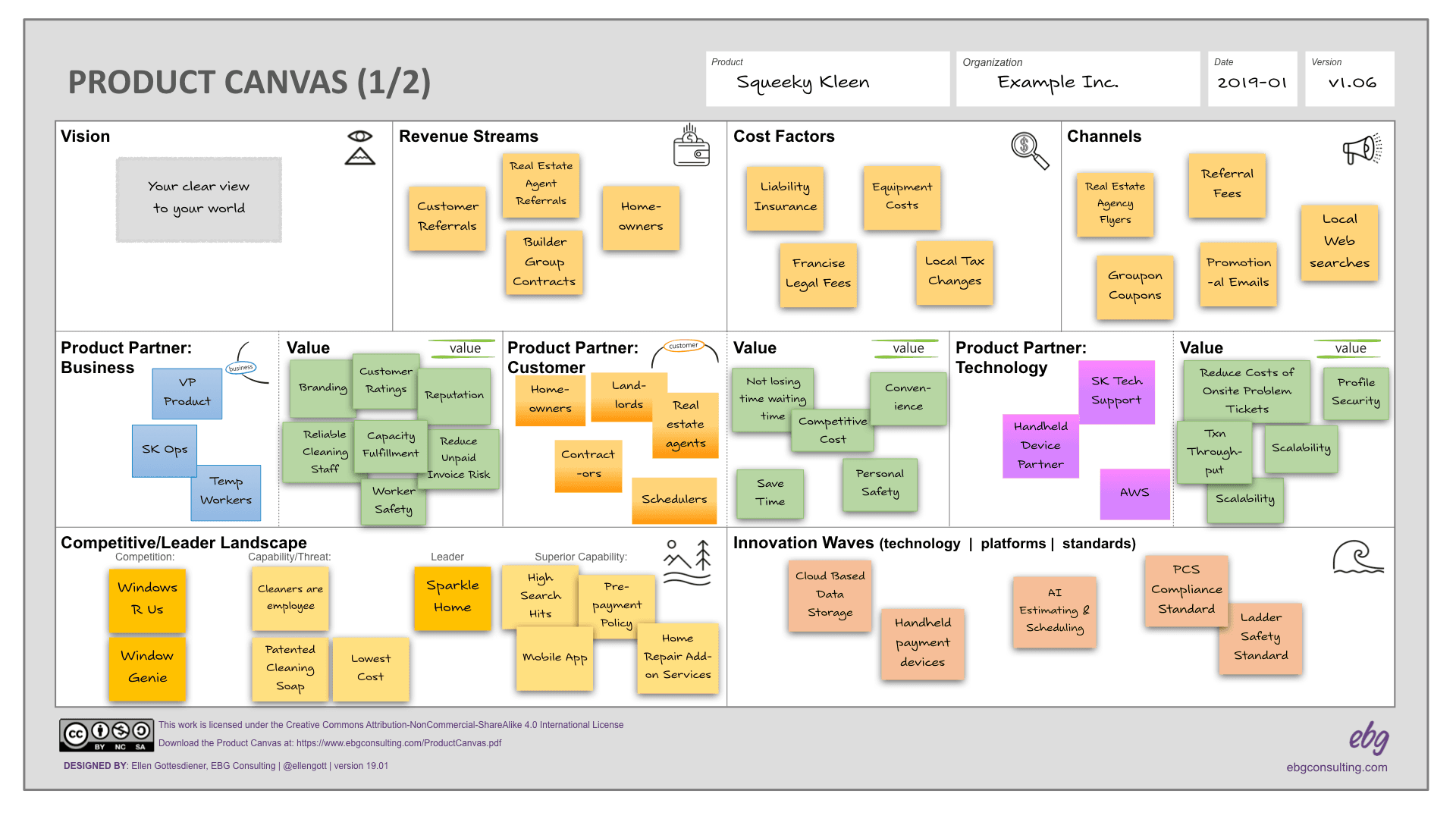If You Are Building A Product, Do This Before Approaching a Software Engineering Team (Free Template Inside)
As a startup or product owner, you need to do the legwork before approaching anybody with regards to developing it. This post covers the importance of creating a business document, why you should create one, how to create one and what are the benefits of having it. You should do this even when you think you don’t require it.
The recent times have witnessed a meteoric rise in the startup ecosystems across the globe. In India, alone, the number of startups has risen from just 7000 a decade back to over 50,000 (according to a KPMG report). This is almost 7x growth!
Investors are pumping in more money than ever before and it’s probably the best time to have your own startup (many might assume). However, as a product design & development agency owner, I have witnessed a pattern in many startups or product owners who come to me with their ideas. I wanted to take this opportunity to pen down a post that answers a question like this -
Countless hours and millions in funds can be saved, if more people ask this question to themselves before talking to any design & development agency.
Here, at SoluteLabs, we encourage product owners and startups to create a business document that contains the simplest (yet highly crucial to the success) pointers. At times, we do a project discovery revolving around this if a product owner is completely clueless about how to proceed further with their idea.
So, if you are a product owner or about to build one, read this.
List of topics covered under this post —
- What type of business document do you need?
- How do you create a business document for new product development process? Taking inspiration from the ‘Lean Canvas’ model.
- What comes under the ‘Lean Canvas’ structure?
- What are the benefits of creating such a business document before even approaching a design or development service provider?
- The Product Development Approach/Process at SoluteLabs
- Ending Notes & Resource Links
Business Document — What it is?
You might wonder — well, is this some sort of a business planning document or what? Fortunately, you don’t have to write a 40-pages document to get a clear picture of your idea. One page and that’s it! But filling in the details won’t be that easy.
Now, if you want to build a product/startup that lasts, this is one of the first steps towards that goal. Let’s see what a filled document looks like —
What is the Lean Canvas Model for preparing a business document?
Ash Maurya decided to make the lean canvas model taking inspiration from Alex Osterwalder’s Business Model Canvas.

The lean canvas model is more startup focused and hence is a good starting point if you are looking to create your own digital product.
How to create Lean Canvas focused business document for your digital product startup?
Take a look at this example from EBG consulting
Here’s what the lean canvas/business document should cover at the minimum -
Pain Points — Start out by defining what problems your startup/product intends to solve. A good starting point for this is to talk to your target customers. Spend a lot of time talking to them and observing their behaviour. There is nothing like user research. Get out in the field to know your users and the problems they face. For instance, YouTube started out by defining their problem area as — There is no video hosting website.
Product Vision — There is no one better than you who understands your product. You need to be crystal clear about your vision. Take time to define this as it will chart the course of your startup’s journey.
User Persona — Know your audience in and out. That’s the best way to build a sustainable product. But the biggest question is how do you create these personas? The answer lies in talking to your users.
Gather as much as data and use insights from it to create an ideal profile. YouTube identified teenagers, video hobbyists, film makers and college students as early adopters. Their key customer segments included advertisers and amateur video bloggers.
What does a user persona include?
- A person’s important statistics like age, gender, what they do for a living, what does his/her daily life look like, whether they have children etc.
- Besides this, other important things are their needs, goals, motivations and frustrations.
- Another important thing to capture under a user persona is understanding a person’s everyday life activities, device usage (depending on the product you intend to build) etc.
Value Proposition — One of the most important points that must be clear to you is your unique value proposition. If you are not aware of it, invest some time in figuring this out with your mentor, co-founder or users. If it’s not clear in your head, it won’t be in your users’ mind too. When YouTube was launched there was no website that allowed users to create and upload videos. That was their USP. The unfair advantage Youtube has of video hosting on large scale. Difficult for others to compete in this area.
Airbnb also very clearly defined its UVP for both hosts and travellers.

Learn more about the value proposition canvas in this video-
Customer Acquisition — In my career, this is one of the key areas that startup owners miss out on. They just want to keep adding features for users but are not aware of how to get those users. Identify early-on what channels (inbound or outbound) you will rely on to acquire users. YouTube relied on technology magazines, emails and referrals to gain new users. What’s your channel?
Metrics That Will Matter — When asked how do you measure success of your digital product, many founders give vague reply. Some just think the metrics that worked for a particular startup will work for them too. That’s not the case. You need to define early on what matters to you and how you will measure it. Daily active users, monthly recurring revenues, sign-ups etc. are just some of the many metrics available. You need to be aware that you don’t slip into measuring vanity metrics. Read about how to identify such metrics here.
Cost & Revenue — You can’t expect your product to start earning on its own. You have to put a lot of work and have to plan for cost structures including how you will monetize it. Advertisement was one of the ways for YouTube to generate revenues.
Airbnb decided it would charge a fee from both hosts (3%–5%) and travellers (0&–20%). You need to get deep down into such nitty-gritty before you start product design & development. When it came to the cost structure of Airbnb, it included platform development & maintenance, marketing costs, employee salaries, cost of capital etc.
Why should you create a business document based on the Lean Canvas Model?
Using the lean canvas is like creating business models for your startups without having to write a 20-page document. One sheet and you can visualize your entire product/startup. Plus, it will make it easier for you to convince your investors in case you are looking for funding.
Business document prepared using a lean canvas is pretty self-explanatory. No need to spend hours behind explaining your concept. People will just get it!
However, as a product owner you must remember this -
Lean Canvas is just a tool to facilitate business planning and understanding. It means nothing compared to the value of true customer understanding. Spend more time with them. These tools are useful in helping to guide those conversations and managing the resulting information.
Another advantage of using this method to create your business document is that it remains succinct yet robust. You can’t go wrong with this.
The Product Design & Development Approach @ SoluteLabs
We firmly believe that we develop products not to satisfy your or our ego. We exist to build highly usable and profitable products. Therefore, users always come first for us. Agile Methodology helps us achieve this goal. Using iterative development, we collaborate with startups/product owners and their users/customers to create products that actually solve a problem.
It is a must for any product owner/startup who wants to collaborate with us to be hyper aware of the things we discussed above. Otherwise, our experience tells us, a lot of time and effort are wasted. And, not to mention about the money that goes down the drain. We hate seeing it evaporate.
So, how does our design and development process look like?
- You come to us with your idea. It’s fine if you have not filled in the above document. We sit with you and your team, do a project discovery and fill the canvas together. Wonderful things happen when you collaborate and firmly stand your ground to build user-first products.
- Once we are clear about the idea, we prioritize the features and quickly work on rolling out an MVP to keep the time-to-market at a minimum.
- You and us, both, test the product with actual users and gather feedback.
- Iterate on the feedback and roll out the next version.
- Rinse and Repeat.
How do you ensure you save time on product development?
We use the latest tools and technologies for developing digital products. For instance, using CI/CD (Continuous Integration and Continuous Delivery) tools like Bitrise, we build, test and deploy products faster. How does that happen?
Let’s say you want to build a native app or a cross platform product. Tools like Bitrise offer full stack mobile coverage. Whether you choose Swift , Objective-C, Java , Kotlin, Xamarin, Cordova, Ionic, React Native, or Flutter, initial workflows are automatically configured so that we can start building a product quickly. Plus, a mobile Continuous Integration model, allows us to get hold of bugs & inconsistencies before they reach production and fix them immediately. Get in touch with us to learn more about our process in detail.
How do you know what works and what does not?
We heavily rely on analytics. What users do and why they do are super important to us. We integrate top of the class analytics tools like Firebase Analytics to understand user behaviour and suggest changes/improvements accordingly. We are fanatical about measuring everything!
Ending Notes
It is my sincere advice to product owners to use this model for figuring out what you want your product to do before approaching any developer or agency. Plus, it will do wonders for you and your business. Here is the link to the free PDF template.
And, always listen to your users.
Happy building!













